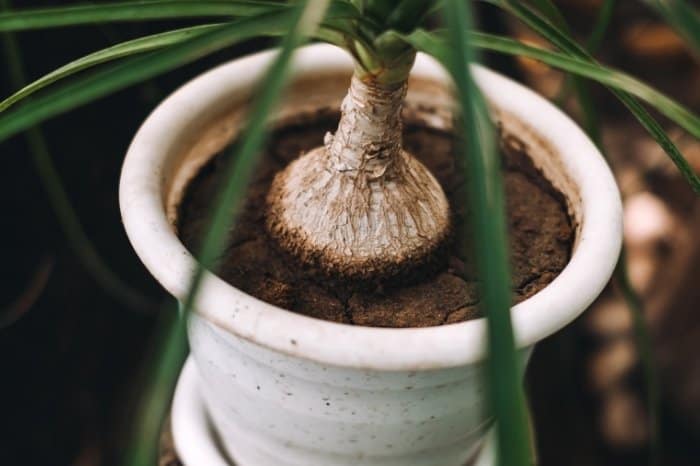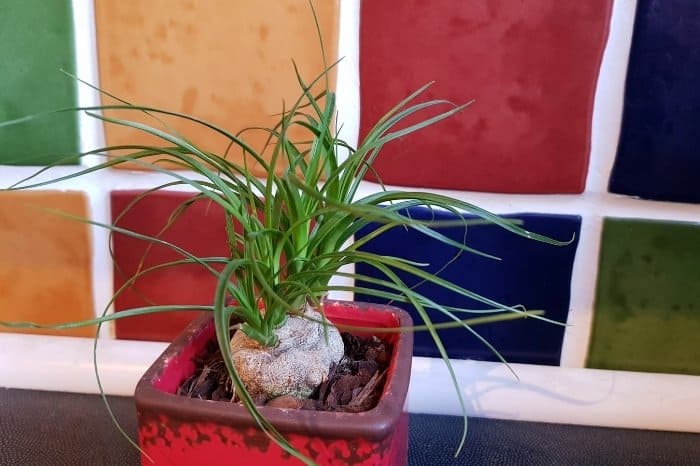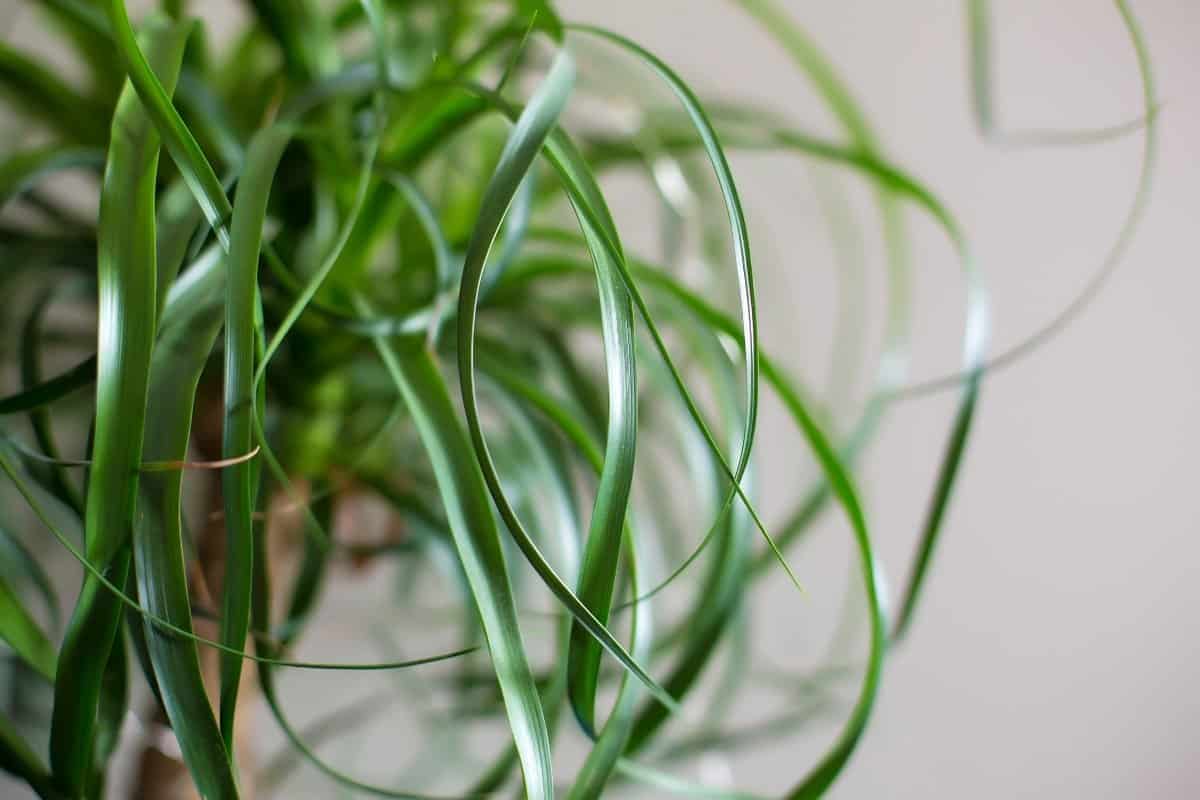Last Updated on January 9, 2023 by Urska
The ponytail palm is a very popular houseplant and managing indoor ponytail palm care isn’t a difficult task. Even though it draws its roots from eastern Mexico, the ponytail palm is now a very common plant. More and more households around the world are adopting these plants as colorful decorations.
How To Care For A Ponytail Palm
Ponytail palm indoor care is not complicated as the plant is not known as a sensitive one. There are a few knacks that you certainly need to keep in mind, such as watering and positioning. Aside from that, however, the ponytail palm is usually a very healthy and easy-to-maintain plant.

Ponytail Palm Positioning
Your ponytail palm needs at least three to four hours of sun every day. This plant originated in eastern Mexico and it’s accustomed to warmer climates. When you’re setting your plant, make sure that it’s facing a southern or a western window. This will ensure that it gets at least a few hours of sunlight a day. This is crucial for photosynthesis and to ensure that your plant doesn’t overwater or overhydrate.
Some owners even take the plant out during the summer and leave it out – this allows the plant to store energy. Your ponytail palm will use this energy during the winter when the lighting is limited.
You should also rotate your plant once a week – this will ensure that all the leaves get enough sunlight and don’t dry out.
Another available option is planting your ponytail palm outside. This will allow the plant to grow to become truly massive – up to 30 feet! However, to accomplish this, you need to live in a very warm environment. These plants need a lot of sun and they like heat. The soil needs to be well-drained for your palm to grow properly, as they can develop root rot if the soil is too wet. However, the good news is that this plant can handle most types of soil.
Ponytail Palm Watering
Watering is probably the most sensitive aspect of maintaining a ponytail palm. Overwatering or underwatering a ponytail palm are two of the most common mistakes plant owners make!
Underwatering it will cause it to dry out while overwatering it will cause overhydration! The ponytail palm likes to dry out before being watered. This means that you should only water it once every two weeks, while you can change that to once every three weeks during winter!
Make sure to check the soil before you water your plant. It shouldn’t be too dry (it will harden if it is), but it shouldn’t be soft or wet at all. If the soil isn’t completely dry, then wait a day or two before watering.
Overwatering and underwatering the plant are two of the most common mistakes owners make with ponytail palms. If you overwater your plant, the leaves will start to become yellow and they will drop.
The opposite of that is underwatering your plant. This usually happens because it’s difficult to keep track of watering (which is why experts suggest using a watering schedule).
Read more about Cat Palm vs Areca Palm – 6 Outstanding Differences and Similarities
Ponytail Palm Potting And Fertilization
You don’t need to worry about fertilization too much. Botanists recommend that you fertilize the ponytail palm from spring to autumn with organic houseplant fertilizer. These palms don’t grow too quickly, so you shouldn’t worry if your plant isn’t growing.
Regular soil, sand, and perlite in an equal ratio make for a great mixture – it won’t dry out too quickly and it will distribute water well. You should repot your palm every 12 to 18 months, but larger plants stay in a pot longer.
Miracle-Gro 3003010 Shake ‘N Palm Plant Food Feeds up to 3 Months
Ponytail Palm Trimming
Even though the leaves of a ponytail palm are sensitive, you should feel free to trim them. This can help you achieve the shape you want your plant to have. The tips of the leaves will often go black with time and you should cut them off with scissors.
Pruning a ponytail palm isn’t recommended because these palms are single-stemmed plants. This means that you have to remove the trunk completely when pruning. This is, clearly, something that you don’t want. That’s why botanists prune these plants very rarely, as it’s usually done only when the pups are supposed to be removed for planting.
Origin And Description
Even though this plant originated in many different states in eastern Mexico, it is now only found in the state of Veracruz. These plants can live for a very long while, with one plant in Mexico registered to be 350 years of age.
There are incredible examples of this palm growing up to 30 feet (9 meters) in height, but most plants rarely grow to be larger than 4 meters. The diameter is usually no larger than 50 centimeters with a smooth bark.
This palm likes areas that average around 20 degrees Celsius. They also don’t like moisture too much, which is why they thrive in dry areas, especially areas with a dry season during the summer. In the wild, these plants are extremely tolerant to drought and they grow very slowly. However, with proper fertilization and hydration, they’re going to grow at a quicker rate.

Currently, these plants are not very well conserved in the wild. Their status classification remains critical because of the severe destruction of their habitat. In Mexico, ponytail palms have been reduced to exist in only a single state (Veracruz) as their habitat’s been threatened all over the country.
In conclusion, the ponytail palm is not difficult to maintain at all and it makes a very enjoyable houseplant. It needs a few hours of sun a day, and it would really thrive if you could leave it outside during the summer. The most important aspect of maintenance is watering – it’s important not to overwater or underwater the plant. These plants likely won’t grow over 12-14 feet in height, and they only need occasional trimming. If you decide to plant one outside, it could grow to become absolutely massive!
The ponytail palm could make a great fit for anyone with a spacious home and enough sunlight.
Read more about How Big Do Ponytail Palms Get?



